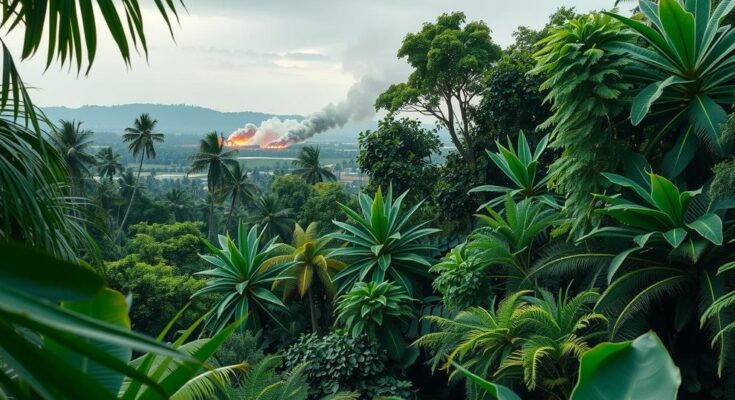Ecuador’s Constitutional Court dismissed an appeal from the Warriors for the Amazon regarding the enforcement of a prior ruling against gas flares. Despite a favorable ruling in 2021, gas flaring continues, affecting the health of communities. Activists, including UDAPT, criticized the decision, asserting it allows the state to evade compliance. The Warriors vowed to continue their fight despite these setbacks.
On January 30, 2025, Ecuador’s Constitutional Court dismissed an extraordinary protection action launched by the group known as “Guerreras por la Amazonia” (Warriors for the Amazon). This activist coalition, which includes support from the Union of People Affected by Texaco’s Oil Operations (UDAPT) and the group “Eliminen los Mecheros, Enciendan la Vida,” previously achieved a 2021 court ruling mandating the cessation of gas flaring in the Ecuadorian Amazon and the implementation of reparative measures for the infringement of their rights to health and a safe environment.
The Warriors’ action sought to guarantee that the court-ordered reparative measures were adequately enforced, particularly concerning the removal of gas flares near populated regions. Amnesty International submitted an amicus curiae to the Court highlighting the unclear term “population centres” and how the authorities could exploit this vagueness, effectively undermining the ruling’s intended enforcement. Consequently, the Constitutional Court’s decision has perpetuated the violation of constitutional rights for the plaintiffs and the Amazonian populace.
Although the Court recognized a failure to comply with the prior ruling, it rejected the Warriors’ action on the basis that “the right to due process in the guarantee of motivation was not violated.” Thus, neither justice nor substantial reparations were granted to the Warriors and their communities. Pablo Fajardo from UDAPT criticized the Court’s decision, asserting that it did not address the significant flaws in the Sucumbíos Court’s ruling, which allowed government entities to evade compliance.
Ana Piquer, the Americas Director at Amnesty International, also condemned the Court’s ruling, arguing that the ambiguities allowed the ongoing operation of gas flares. She underscored that this continuation contributes to climate change, posing increasing threats to the Warriors for the Amazon, as well as the broader population exposed to toxic emissions. The ongoing operation of these gas flares signifies a deteriorating future for the Ecuadorian Amazon.
Despite the setback from the Constitutional Court, the Warriors for the Amazon remain resolute in their commitment to the fight for their land and future. They proclaimed, “We will NOT falter, we will not give up, we will not be beaten. We will continue to fight for our future, for our life, for our land.”
The Warriors have faced ongoing challenges even after their earlier favorable ruling. Citing the vague language of the earlier decision, they filed an action on October 28, 2021. The ruling mandated the removal of flares near populated areas within 18 months and established a 2030 deadline for others. However, Petroecuador, the state company, has interpreted the ruling to mean that flares more than 150 meters from residential areas are not yet subject to removal, despite evidence linking harmful effects to distances up to 5,000 meters. The Warriors, supported by UDAPT, publicly objected to this restrictive interpretation.
Furthermore, a notable incident has highlighted the dangers faced by activists: 14-year-old Leonela Moncayo was attacked for vocalizing her concerns about climate-changing gas flares. This attack underscores the urgent need for protective measures for those advocating for the Amazon’s preservation.
In summary, the dismissal of the extraordinary protection action by Ecuador’s Constitutional Court denies justice to the Warriors for the Amazon and their wider communities, allowing gas flaring to persist and further jeopardizing their health and environment. Despite the legal setbacks, the Warriors remain steadfast in their commitment to advocate for their rights and environmental justice. The ongoing struggles illustrate the critical intersection between activism, environmental protection, and the protection of human rights amidst governmental ambiguities and failures.
Original Source: amnesty.ca




